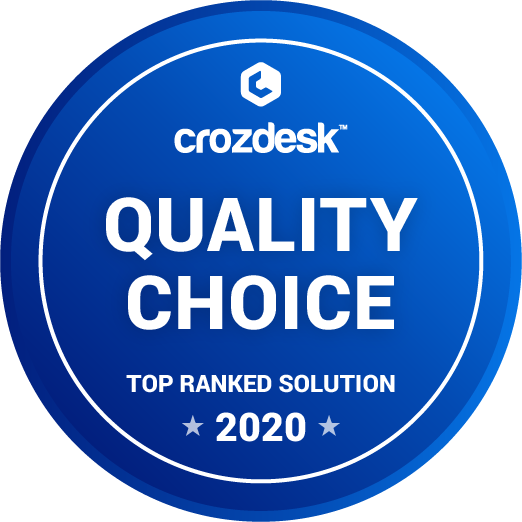
Picture this: a world where every financial decision, from personal investments to corporate strategies, is backed by precision and insight. Today, we’re living in that reality, thanks to the power of analytics.
With the sheer volume of data available and cutting-edge technologies to process it, we’re no longer making guesses—we’re making informed, strategic choices, whether predicting market trends, optimizing investment portfolios, or identifying risks before they materialize. Let’s dive into why these strategies matter more than ever.
The digital age has unleashed an unprecedented explosion of data, transforming how financial institutions and businesses operate. From transaction records to customer behavior patterns, data flows fast, offering a treasure trove of insights for those who can harness it effectively.
However, the value of data lies in its accuracy and timeliness. Real-time access to clean, reliable data ensures that decisions are grounded in current information, reducing risks and enhancing opportunities in an increasingly competitive financial landscape. Thus, analytical strategies come into play, turning raw data into actionable insights. Here are some of them.
Risk Management
Risk management analytics identify, measure, and mitigate financial risks to protect organizations from unforeseen challenges. This strategy uses data-driven insights to simulate potential scenarios and develop contingency plans, mitigating the impact of risks before they materialize.
With the digital age introducing new complexities like cybersecurity threats, risk management analytics is indispensable for maintaining stability and safeguarding assets in an unpredictable financial landscape.
Navigators can play a critical role in helping financial institutions and businesses identify, quantify, and mitigate risks. They guide users through identifying potential vulnerabilities, evaluating their impact, and implementing strategies to minimize exposure. A review of Stock Navigators shows they are especially valuable in industries with high levels of uncertainty.
Predictive Analytics
Predictive analytics leverages historical data to anticipate future trends and outcomes, enabling businesses to make informed decisions and stay ahead of the curve. By identifying patterns in past performance, companies can forecast sales, customer behaviors, and even supply chain disruptions.
For example, a retailer might use predictive models to prepare for seasonal demand spikes, ensuring inventory levels align with customer needs. Similarly, manufacturers can anticipate equipment failures and schedule preventive maintenance to avoid costly downtime.
Customer Behavior Analysis
Understanding customer behavior is at the heart of crafting successful strategies in today’s competitive market. By analyzing purchase histories, browsing patterns, and engagement metrics, businesses can create personalized experiences that resonate with their audience. E-commerce platforms, for instance, use customer behavior data to offer tailored recommendations, increasing conversion rates.
Restaurants or service providers can identify peak times and adjust staffing levels to enhance customer satisfaction. This approach fosters loyalty and deepens relationships by showing customers that their preferences are understood and valued, creating a significant advantage in any industry.
Portfolio Optimization
Portfolio optimization isn’t just for investors; businesses across industries can use this strategy to maximize returns on resources while minimizing risks. For investors looking to leverage data-driven insights to build profitable portfolios, platforms like VectorVest provide powerful tools for analyzing stocks, identifying trends, and optimizing investment decisions with confidence. For instance, companies can analyze the performance of different product lines or services and allocate budgets and resources accordingly.
Through optimization models, businesses can invest resources in the areas with the highest potential for growth while maintaining a balance that minimizes risk. For organizations with multiple business units or revenue streams, this analytical strategy helps align efforts with broader goals, ensuring sustainable growth and profitability.
Cost and Efficiency Analysis
Cost and efficiency analysis helps organizations streamline their operations by identifying wastage and opportunities for improvement. This strategy uses data-driven insights to analyze workflows, supplier contracts, or resource allocation, uncovering inefficiencies that may not be immediately obvious.
For example, a logistics company might optimize delivery routes using real-time traffic data, reducing fuel consumption and delivery times. A tech company could analyze project management workflows to identify bottlenecks and accelerate product launches. By cutting unnecessary costs and improving processes, businesses can reinvest savings into innovation and growth, maintaining a competitive edge in their markets.
Scenario Analysis and Stress Testing
Scenario analysis and stress testing allow organizations to prepare for potential challenges by simulating hypothetical situations and assessing their impact. For instance, a retailer might model the effects of supply chain disruptions to develop contingency plans, and a construction firm could evaluate the financial implications of rising material costs on current projects.
By understanding how various factors could affect operations, businesses can build resilience and develop strategies to navigate uncertainty. This approach positions companies to seize opportunities in challenging circumstances.
Fraud Detection Analytics
Fraud detection analytics plays a crucial role in safeguarding businesses from financial losses by identifying unusual patterns or anomalies in data. This strategy uses advanced techniques like machine learning algorithms, behavioral analysis, and real-time monitoring to flag suspicious activities that deviate from typical patterns.
For example, an e-commerce platform might detect potential credit card fraud by analyzing purchasing behaviors, such as sudden large transactions or purchases from unusual locations. Similarly, subscription-based businesses can identify account takeovers through irregular login patterns or usage spikes.
This approach ensures that businesses remain resilient in an environment where cyber threats and financial crimes are becoming increasingly sophisticated.
Competitive Benchmarking Analytics
Competitive benchmarking analytics helps businesses measure their performance against industry leaders or direct competitors to identify strengths, weaknesses, and growth opportunities. This strategy relies on gathering and analyzing data across various metrics, such as revenue, customer satisfaction, market share, or operational efficiency.
For example, an e-commerce company might analyze website traffic, conversion rates, and average order value. Similarly, a manufacturing firm can benchmark production costs and delivery times to identify inefficiencies. This strategy is particularly valuable in staying relevant in fast-paced markets.
Conclusion
The power of analytical strategies lies in their ability to turn raw data into actionable insights, enabling businesses to navigate complexities with precision and confidence. For instance, by leveraging predictive analytics, organizations can anticipate trends and make proactive decisions that drive growth and innovation.
Equally important is the role of customer behavior analysis, which deepens relationships and fosters loyalty through personalized experiences. Further, scenario analysis and stress testing prepare businesses to face uncertainty, ensuring resilience and adaptability in challenging environments. Such approaches underscore how data-driven strategies shape a successful financial future.
Raghav is a talented content writer with a passion to create informative and interesting articles. With a degree in English Literature, Raghav possesses an inquisitive mind and a thirst for learning. Raghav is a fact enthusiast who loves to unearth fascinating facts from a wide range of subjects. He firmly believes that learning is a lifelong journey and he is constantly seeking opportunities to increase his knowledge and discover new facts. So make sure to check out Raghav’s work for a wonderful reading.




